Destroyed Tu-22M Seen At Now Empty Russian Airbase
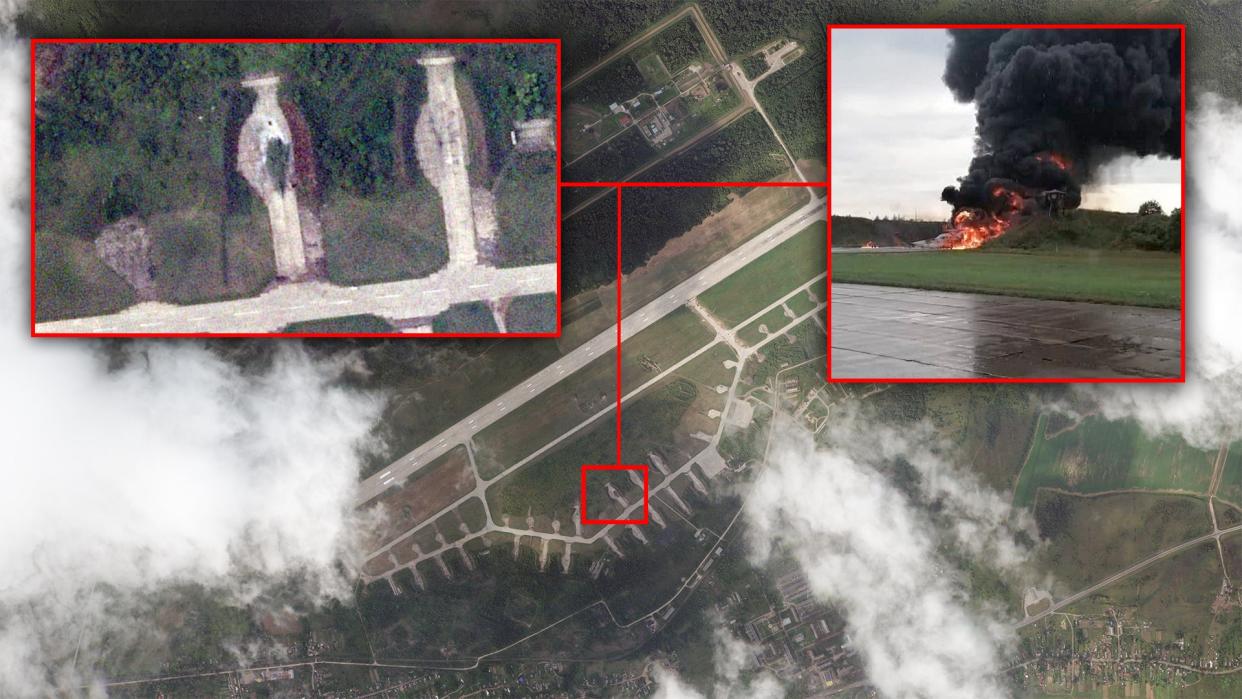
Satellite imagery The War Zone obtained from Planet Labs shows the aftermath of the Aug. 19 Ukrainian drone attack on the Soltsy-2 airbase in Russia that destroyed at least one Tu-22M3 Backfire bomber.
The images, taken Monday, show the scorched remains of a Backfire in a revetment where examples of the type had been parked at least since Aug. 16, the last time high-resolution images of that base were taken by a Planet Labs satellite before today.
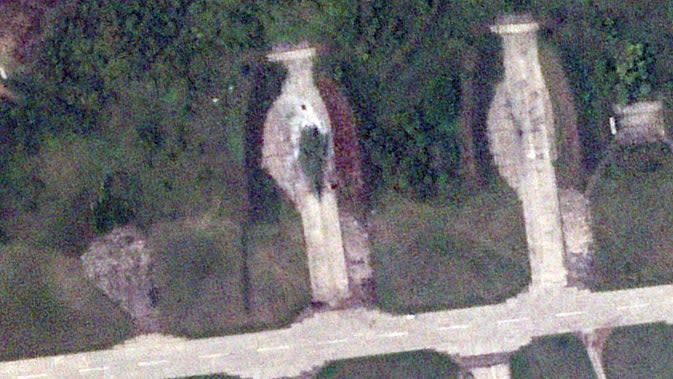
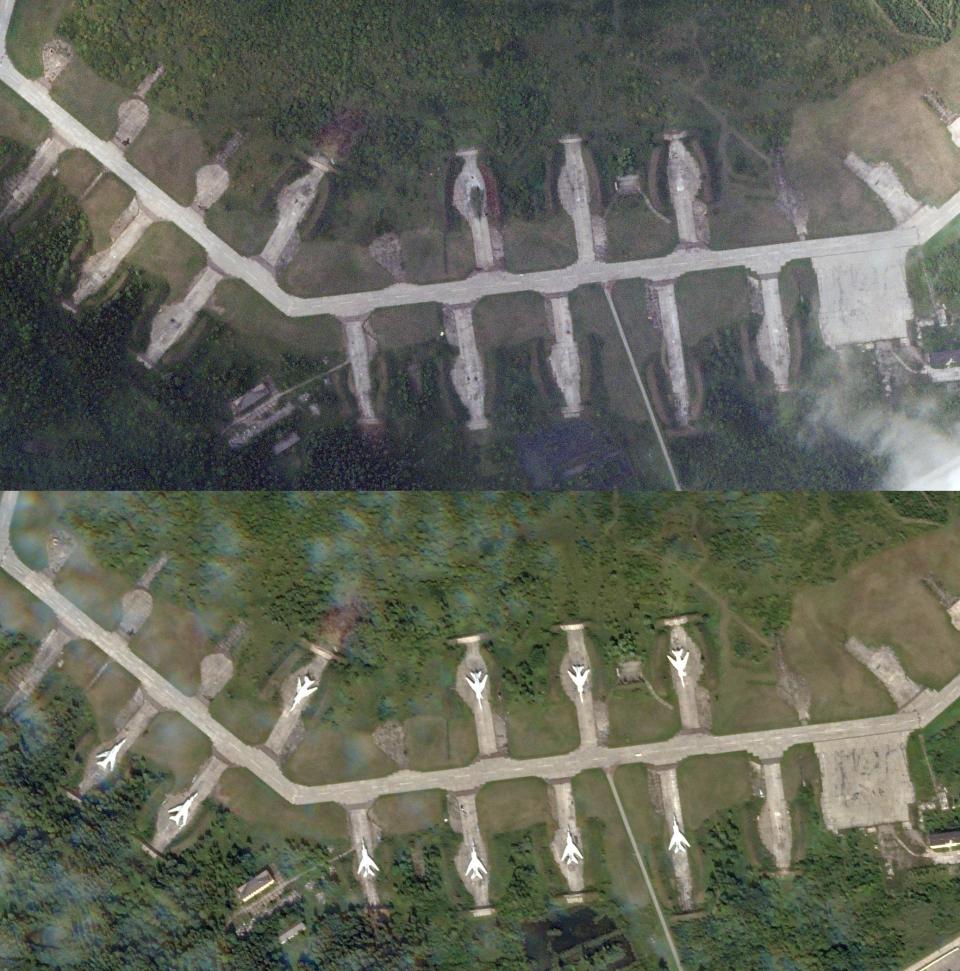
Addition prior images, taken by a Maxar Technologies satellite, show a large contingent of Backfires at the base on Aug. 10.
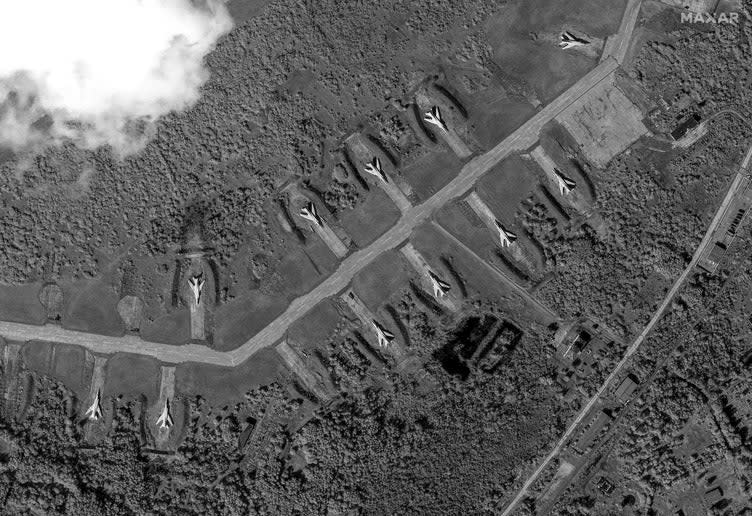
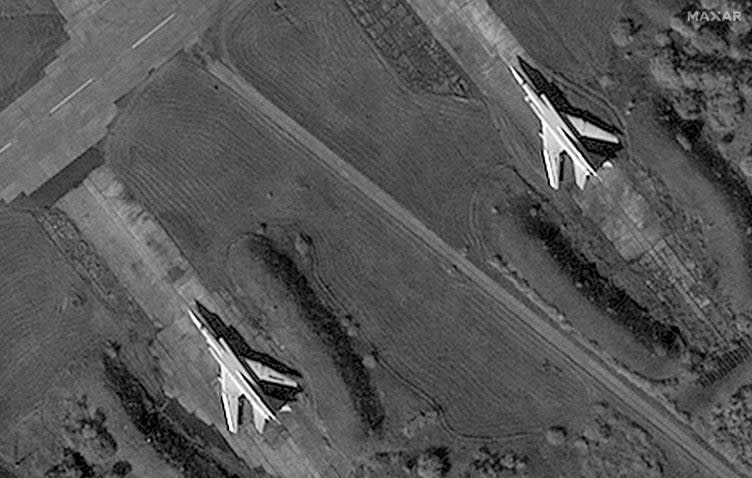
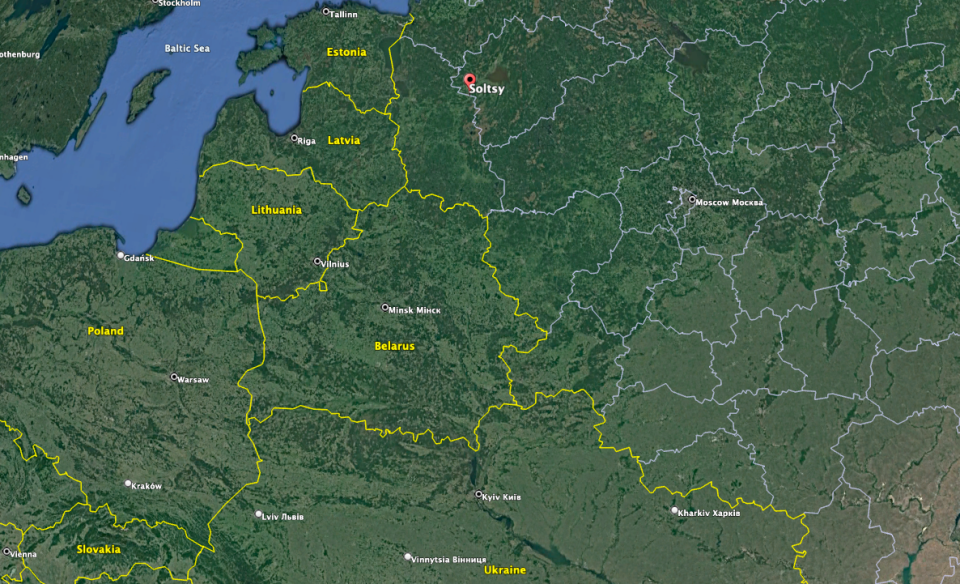
In the wake of that attack, vivid images emerged on social media of a Backfire engulfed in flames. The Russian Defense Ministry (MoD) on Sunday claimed that a drone was detected by the airfield’s observation post and that it was hit by small arms fire. A fire broke out as the result of the “terrorist” attack and one airplane was damaged, the Russian MoD claimed. A spokesman for the Ukrainian Defense Intelligence Directorate (GUR) told The War Zone on Monday that one Backfire was destroyed Saturday in the attack on the Soltsy-2 airbase and two others were damaged.
Aside from showing the burned aircraft, the satellite images also show that Russia has since evacuated all other Backfires that had been parked at Soltsy-2 - which is about 415 miles north of the Ukrainian border - on Aug. 16. A total of 10 Tu-22M3s were seen at the base on the 16th, as well as an Il-76 transport and a Il-18 or derivative turboprop aircraft. All are gone now. That is something of a remarkable feat considering often times aircraft are broken on the ground and cannot immediately sortie, especially complex military types.
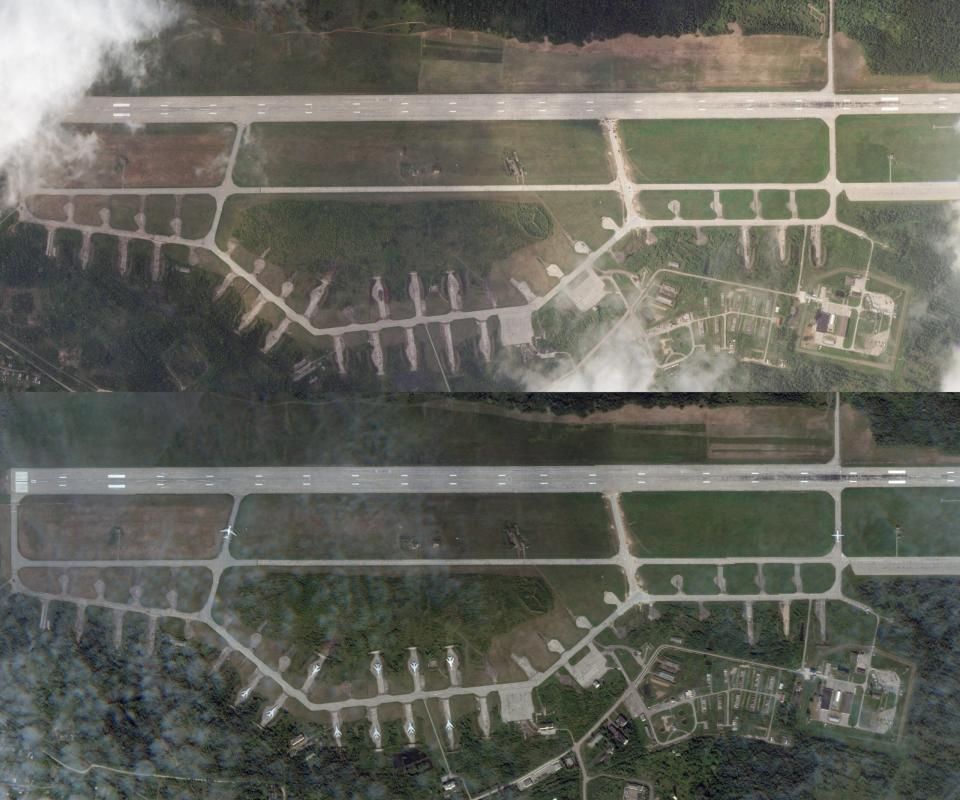
While the bombers were no longer present in the most recent Planet Labs imagery, there was at least one Russian helicopter seen after the attack, as well as peculiar action on a central taxiway connecting the apron to the runway.
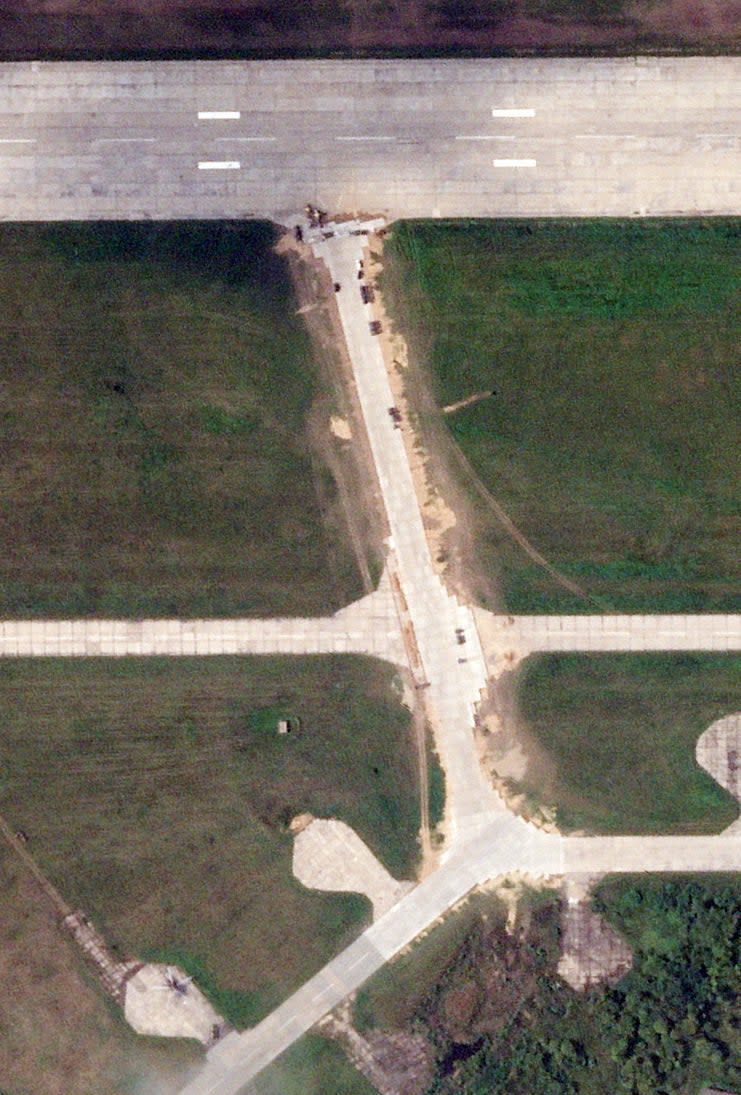
Russian media claimed there was another Ukrainian drone attack on a Russian airbase Monday, this time at the Shaykovka airfield in Kaluga Oblast. That the home of the 52nd Heavy Bomber Aviation Regiment.
There were conflicting reports about the damage, with the MASH media outlet saying there was none and the Baza media outlet saying “an unused aircraft located at the airfield was damaged as a result of the fall” of the drone. You can read more about here.
The drone used in Monday’s attack was “a civilian copter, retrofitted with IEDs and a reinforced battery,” MASH reported. The Russian Defense Ministry, as we reported on Sunday, said Soltsy-2 was attacked by “a copter-type UAV.”
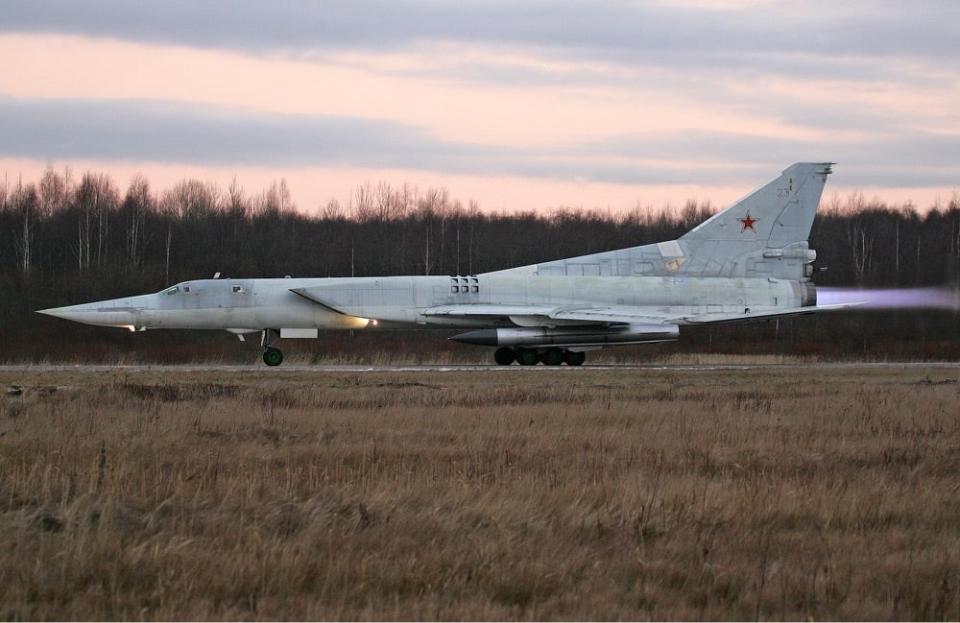
On Sunday, we concluded that the attack on Soltsy-2 was likely conducted from inside Russia, a hypothesis since validated by Ukraine and the U.K.
Andrii Yusov, the GUR spokesman, told us on Monday that it was responsible for both attacks, which were carried out by people inside Russia at the direction of his agency.
“People recruited by the GUR came from central Russia, did their work and went back to their place,” GUR spokesman Andrii Yusov told The War Zone Monday. “GUR continues operations in Russia. In the border regions, in the deep rear and in Moscow.”
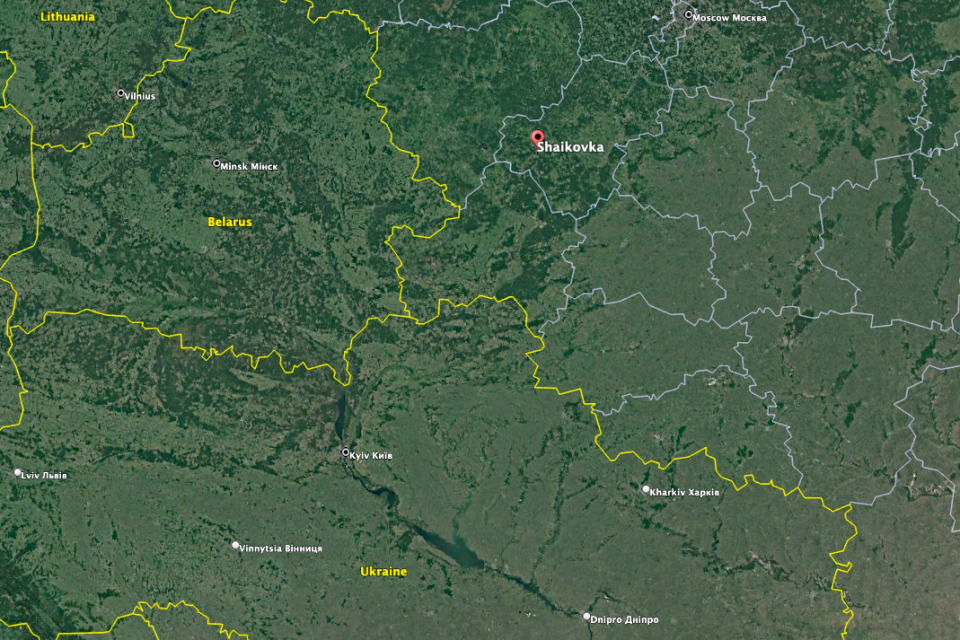
On Tuesday, the U.K. Defense Ministry said that Russia’s claim about a copter-style drone hitting Soltsy-2 “adds weight to the assessment that some UAV attacks against Russian military targets are being launched from inside Russian territory. Copter UAVs are unlikely to have the range to reach Soltsky-2 from outside Russia.”
“This is at least the third successful attack on [Long Range Aviation] LRA airfields, again raising questions about Russia’s ability to protect strategic locations deep inside the country,” the U.K. MoD added.
https://twitter.com/defencehq/status/1693864216107643122?s=12\u0026t=BQRSNakUKt7_8ssZiGBW-A
In addition to these two most recent attacks, Ukraine had in the past prosecuted multiple attacks on Russian bomber bases using long-range drones, although those operations tapered off in recent months. Kyiv seemed to have turned its increasingly far reaching drone capabilities on Moscow, but these latest attacks from inside Russia point to a new trend of targeting Russia long-range airpower via localized drone strikes.
The security situation must remain quite precarious to evacuate Soltsy-2 of all fixed-wing aircraft.
Contact the author: howard@thewarzone.com

